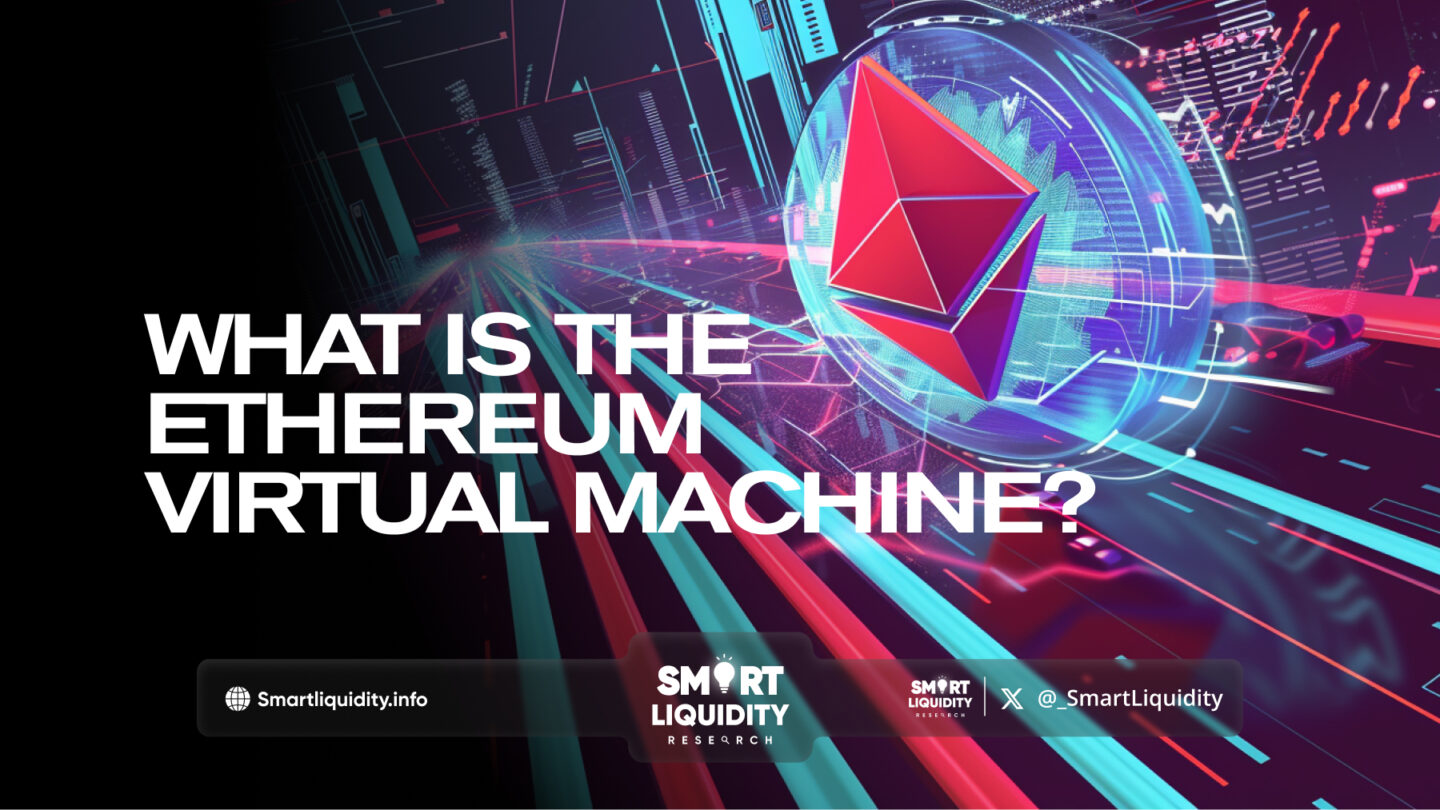What is the Ethereum Virtual Machine?


Ethereum’s blockchain redefines trust and transactions. The Ethereum Virtual Machine (EVM) is the engine behind it all, running smart contracts.Understanding the EVM unlocks a deeper appreciation for the capabilities of the Ethereum network and its growing influence on the blockchain landscape.
EVM: The Engine of Ethereum’s Smart Contracts
Smart contracts are self-executing agreements written in code and stored on the blockchain. They eliminate the need for intermediaries, promoting trust and automation in transactions. The EVM serves as the execution engine for these smart contracts. It interprets and executes the code written in languages like Solidity, ensuring its functionality across the entire Ethereum network.
The EVM operates on a step-by-step basis, meticulously processing each instruction within a smart contract. This methodical approach guarantees that all participants in the network arrive at the same outcome, upholding the integrity of the blockchain.
Gas: The Fuel for EVM’s Execution
Just like a car needs gasoline to run, the EVM requires a specific unit called “gas” to execute instructions within smart contracts. Gas represents the computational effort needed to perform an action.
When deploying or interacting with a smart contract, users pay a gas fee. This fee is denominated in Ether (ETH), Ethereum’s native cryptocurrency. Miners, the computers that validate transactions on the network, collect these fees as a reward for their work.
The concept of gas serves two crucial purposes. First, it incentivizes developers to write efficient code, as complex contracts with numerous instructions require higher gas fees. Second, it prevents denial-of-service attacks, where malicious actors flood the network with resource-intensive smart contracts, aiming to grind it to a halt.
Security and Reliability: The Pillars of EVM
Security is paramount in the realm of blockchain technology. The EVM incorporates several features that make it a robust and reliable platform for executing smart contracts.
- Immutability: Once a transaction is recorded on the Ethereum blockchain, it cannot be altered or deleted. This immutability ensures the integrity of smart contracts and prevents tampering.
- Isolation: The EVM operates in a sandboxed environment, meaning each smart contract runs in isolation from others. This prevents bugs or vulnerabilities in one contract from impacting the entire network.
- Consensus Mechanism: The Ethereum network utilizes a Proof-of-Work (PoW) consensus mechanism to validate transactions and maintain network security. This mechanism ensures that only valid code is executed on the EVM.
EVM’s Impact: Beyond Ethereum
The influence of the Ethereum Virtual Machine (EVM) extends far beyond the Ethereum network. Many other blockchains have adopted or designed their virtual machines to be EVM-compatible. This compatibility fosters a more interconnected blockchain ecosystem, promoting innovation and collaboration. Developers can leverage existing smart contracts and tools built for Ethereum on these new blockchains, reducing development time and effort. Additionally, it benefits users by allowing them to interact with various dApps using familiar tools and wallets designed for the Ethereum network.
EVM compatibility signifies a growing trend towards interoperability within the blockchain space. By adopting a common ground like the EVM, blockchains can overcome the limitations of isolation and unlock the true potential of a decentralized future. However, it’s important to acknowledge that EVM compatibility doesn’t equate to complete interoperability. Each blockchain may have its own unique features and functionalities. While EVM compatibility fosters a shared foundation, further advancements are necessary to enable seamless communication and data exchange across all blockchains.
EVM Compatibility: Building Bridges Across Blockchains
The rise of EVM-compatible blockchains signifies a growing trend towards interoperability within the blockchain space. Interoperability refers to the ability of different blockchains to communicate and exchange data. By adopting a common ground like the EVM, blockchains can overcome the limitations of isolation and unlock the true potential of a decentralized future.
EVM compatibility acts as a bridge between different blockchains, fostering collaboration and innovation within the decentralized ecosystem. Here’s how it works:
- Shared Codebase: Developers can write smart contracts for one EVM-compatible chain and easily deploy them on another. This reduces development time and costs.
- Increased Liquidity: EVM compatibility allows for the creation of interoperable tokens and applications. This can improve liquidity within the DeFi (decentralized finance) space by enabling seamless movement of assets across platforms.
- Network Effects: As more blockchains become EVM-compatible, the network effect strengthens. This attracts developers and users, further accelerating the growth and adoption of blockchain technology.
However, it’s important to acknowledge that EVM compatibility doesn’t equate to complete interoperability. Each blockchain may have its own unique features and functionalities. While EVM compatibility fosters a shared foundation, further advancements are necessary to enable seamless communication and data exchange across all blockchains.
The Final Thoughts
The Ethereum Virtual Machine (EVM) is a powerful and versatile tool that has revolutionized the way we interact with decentralized applications. Its ability to execute smart contracts securely and efficiently has laid the foundation for a new era of innovation in the blockchain space. EVM compatibility further expands its reach, promoting interoperability and fostering collaboration across different blockchains. As the blockchain ecosystem continues to evolve, the EVM is poised to play a pivotal role in shaping its future.




